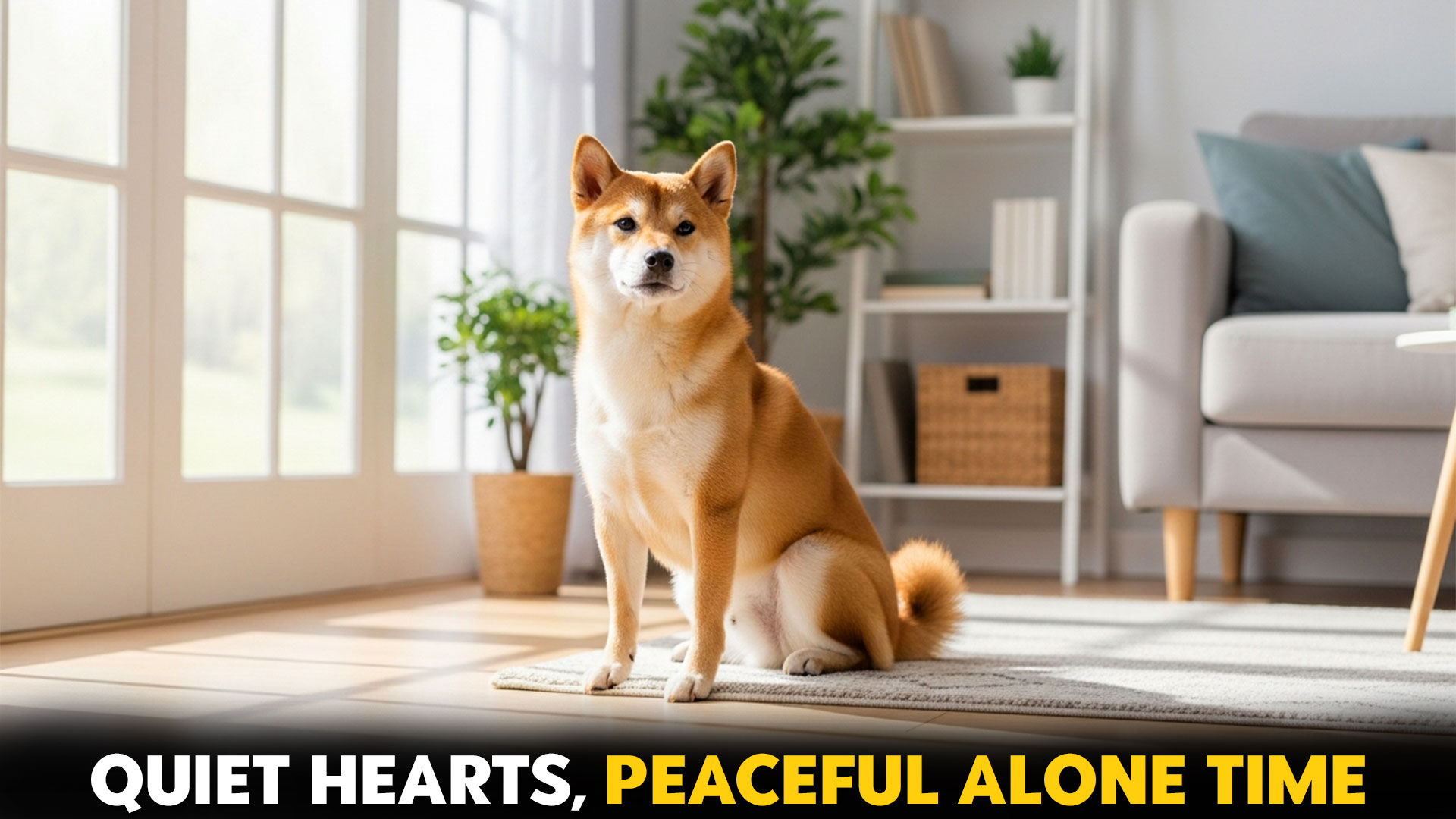Did you know some dogs are perfectly content spending hours alone, while others can’t bear even a short separation? Choosing the right breed isn’t just about size or looks—it’s about lifestyle compatibility.
For anyone with a busy schedule or long workdays, finding a dog that handles solitude calmly is key to a happy home. Some breeds are naturally independent, low-energy, and emotionally stable, making them great companions for people who can’t always be around.
These dogs don’t mind a quiet house, a good nap, and a few toys to keep them company until you return.
In this guide, we’ll explore the breeds that thrive in this kind of setup, so you can enjoy the best of both worlds: a loyal companion and peace of mind knowing they’re content while you’re away.
Dog Breeds You Can Leave at Home Safely, Day After Day
1. Chow Chow
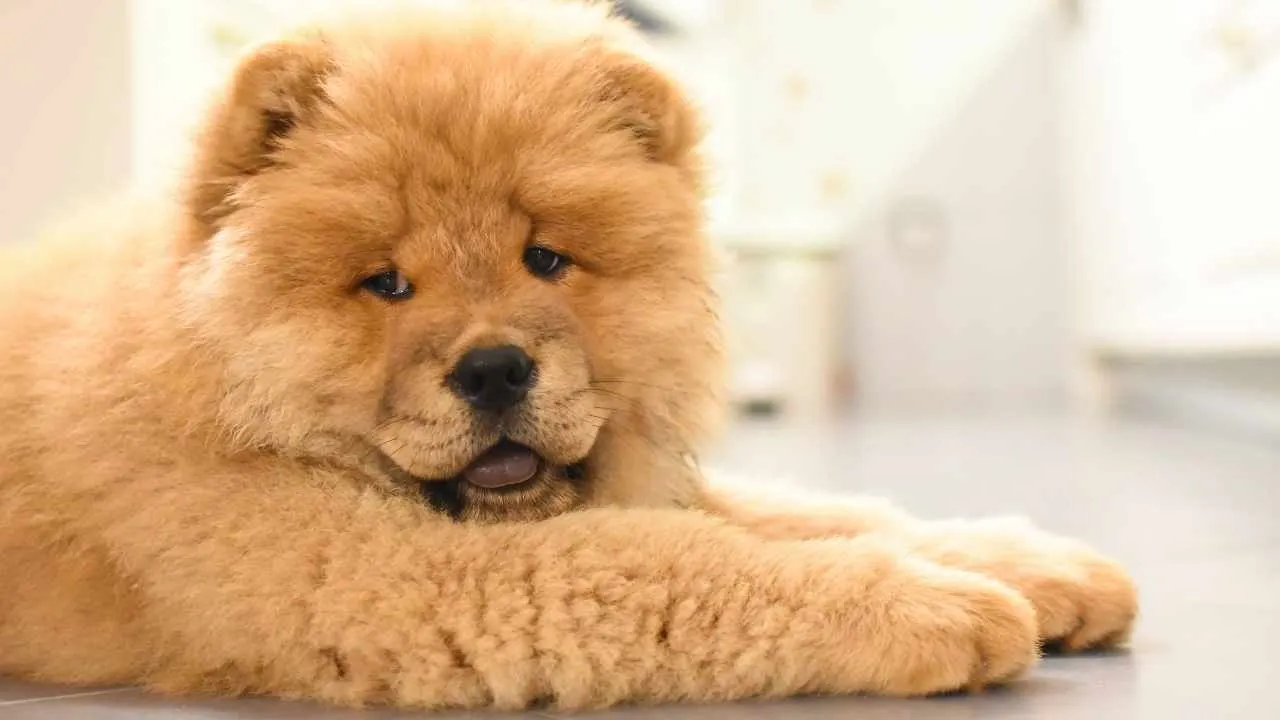
The Chow Chow is an ancient breed from China, renowned for its lion-like mane, thick double coat, and striking blue-black tongue.
With a dignified and somewhat reserved temperament, this breed often bonds deeply with one person and prefers a calm, structured environment, as noted by PetMD.
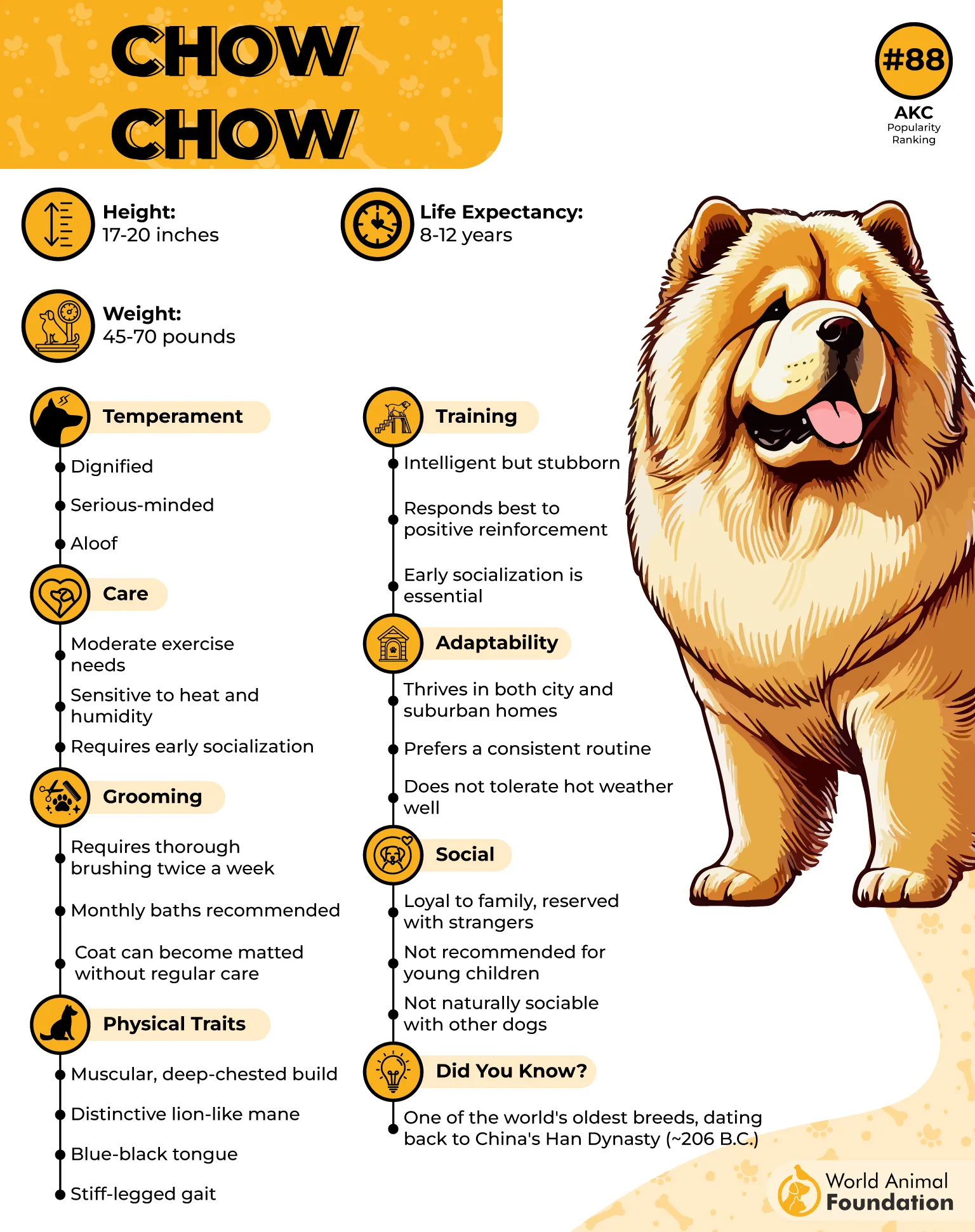
Their independence and moderate activity needs make them potentially suitable for someone who is away during the day, provided their environment is stable and they’ve been properly socialized.
On the flip side, the Chow Chow demands consistent early socialization and firm, positive training to manage its strong will and somewhat aloof disposition.
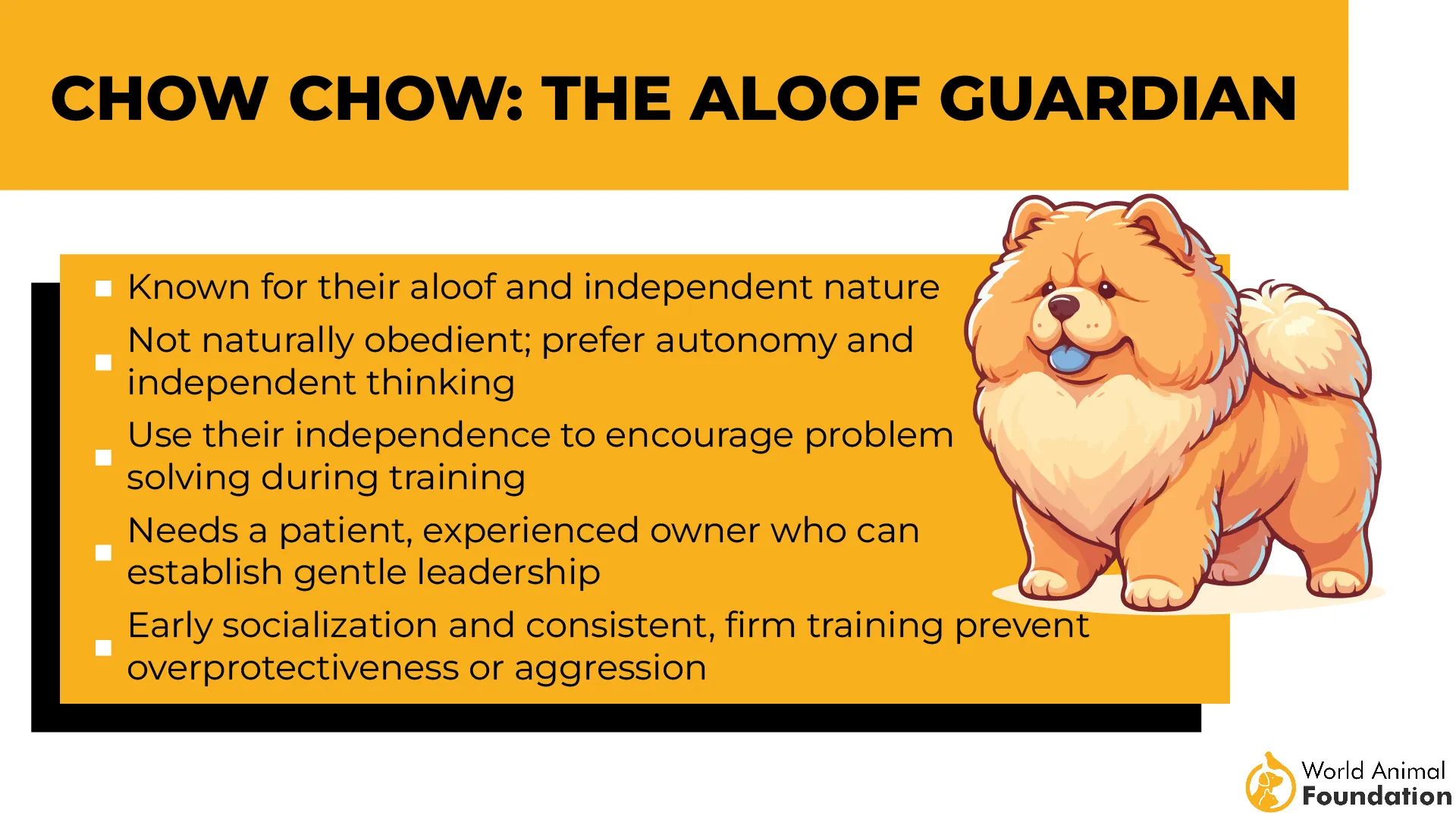
Owners should be aware of grooming needs (especially in rough-coated varieties) and health issues such as hip/elbow dysplasia and eye disorders.
Fun Fact
The Chow Chow’s signature blue-black tongue is one of only a few dog breeds that exhibit this unusual trait, which historically helped distinguish the breed.
2. Chinese Shar-Pei
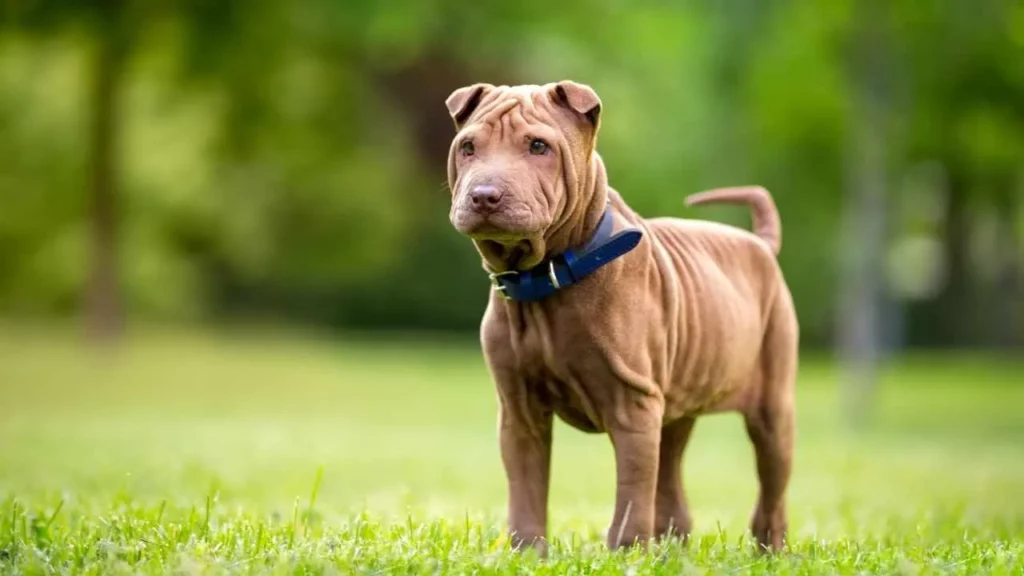
The Chinese Shar‑Pei is a medium-sized ancient breed from China, recognized by its loose folds of skin, short bristly coat, and blue-black tongue.
Known for its calm but alert personality, the Shar-Pei tends to be reserved with strangers while forming strong bonds with its family.
Because of its moderate exercise needs and independent nature, this breed can adapt to being home for several hours if provided with proper training and a consistent routine.
According to Hill’s Pet Nutrition, the breed’s history as a guardian and farm dog reinforces its self-sufficient traits, though its strong instincts and assertiveness mean early socialization is important.
On the health side, care must be taken with their skin folds to avoid infections, and owners should monitor for eye conditions common in the breed.
Fun Fact
The name “Shar-Pei” translates roughly as “sand-paper coat” in Chinese, which refers to the dog’s short, harsh-textured coat.
3. Shiba Inu
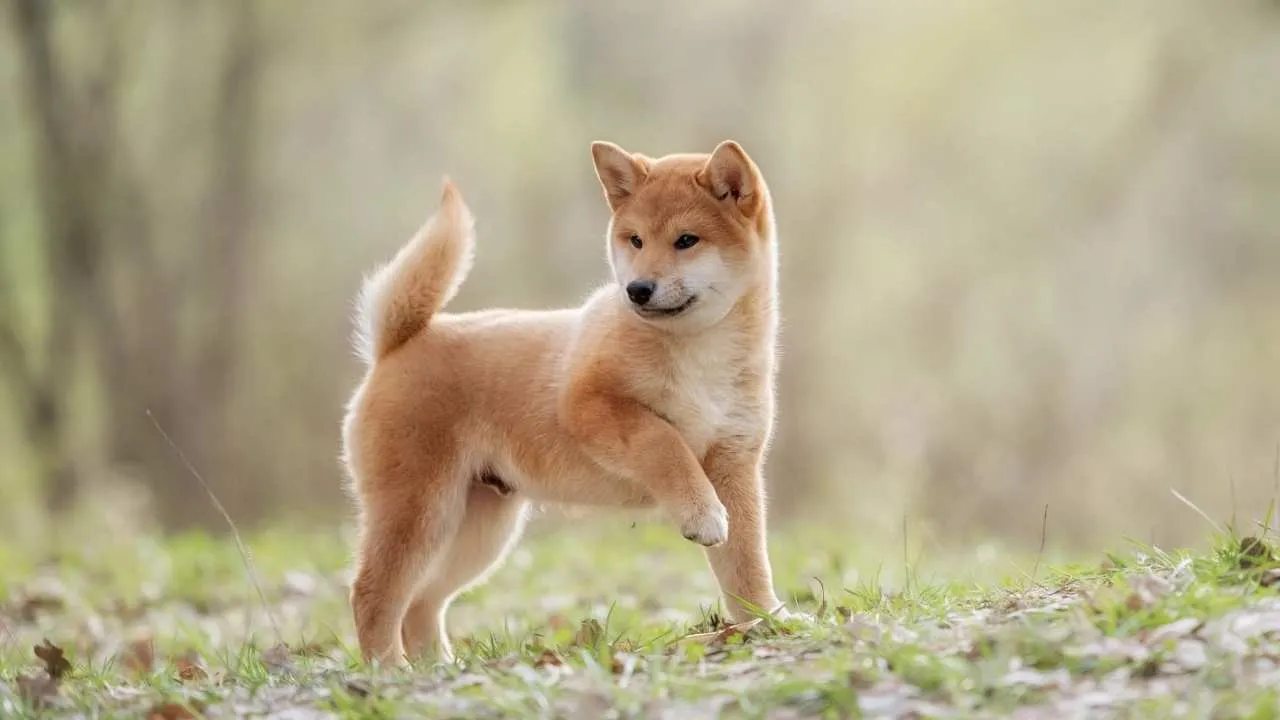
The Shiba Inu is a small-to-medium Japanese breed known for its spirited personality, fox-like appearance, and strong independent streak.
Thanks to its history as a hunting dog and its naturally self-reliant temperament, a well-trained adult Shiba Inu can manage a fair amount of alone time, some sources indicate up to eight hours in the right conditions, as noted by Orvis.
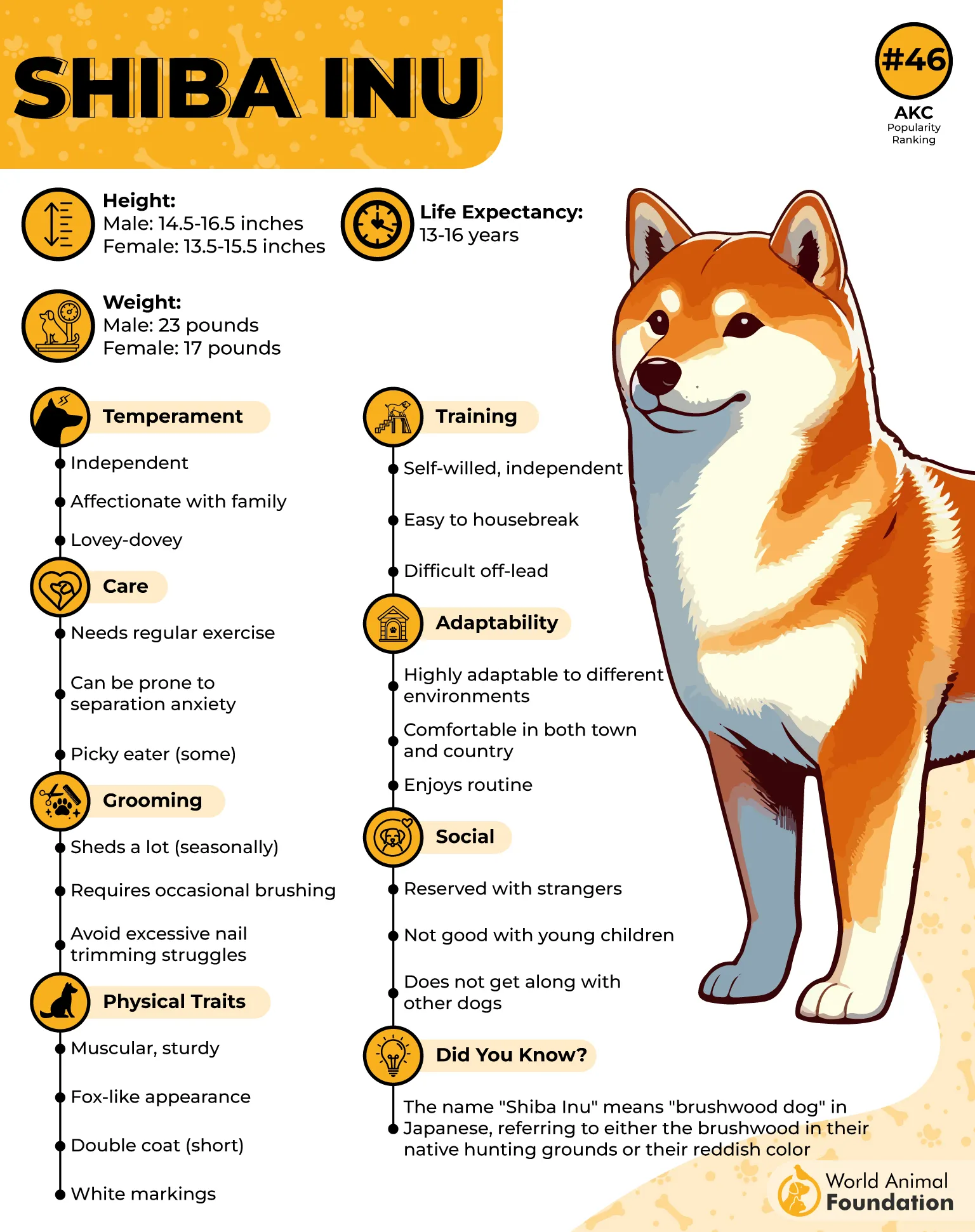
That said, owners must provide sufficient exercise, mental stimulation, and safe containment (especially as bored Shibas may chew or escape).
Early socialization and consistent training are important in this breed to manage its strong prey drive, independence, and occasional stubbornness.
Overall, the Shiba Inu is best suited to an owner who understands the breed’s character and can provide structure plus quiet resilience when away.
Fun Fact
Originally bred to hunt in Japan’s mountainous terrain, the Shiba Inu’s name means “brushwood dog” in Japanese — referencing the environment in which they once worked.
4. Lhasa Apso
The Lhasa Apso is a small, confident dog with the personality of a seasoned guardian. Originally bred in Tibetan monasteries, it has a calm yet alert nature that allows it to stay relaxed when left at home for short periods. Its long coat and expressive eyes make it as charming as it is self-assured.
A daily good walk and a bit of affection are all it needs before settling in for a peaceful nap. Its compact size and easygoing personality make it suitable for apartments and smaller homes.
Lhasa Apsos form strong bonds with their humans but are comfortable spending quiet time alone. They prefer routines and respond well to gentle structure in their daily lives. When raised with patience, they rarely become anxious or overly vocal.
Because they’re intelligent and observant, these dogs pick up commands quickly. They enjoy pleasing their owners but also like to do things their own way, which gives them a quirky charm. A few toys or puzzles can keep them entertained while you’re away.
Fun Fact
The Lhasa Apso was once believed to bring good luck and was given only as a gift—never sold—by Tibetan monks and nobles.
5. Greyhound
Gentle, sleek, and affectionate, the Greyhound is one of the calmest breeds you can own. Though famous for its speed, it actually spends most of its life lounging, earning the nickname “45-mile-per-hour couch potato.” After a brisk walk or a short run, it’s happy to relax quietly for hours.
Greyhounds are surprisingly low-maintenance and don’t need as much exercise as people assume. They enjoy a warm room and a soft bed more than constant outdoor activity. Their balanced temperament makes them ideal for adults with full schedules.
While they form close bonds, these dogs usually tolerate being alone without much fuss. They can rest contentedly while their owners are at work, provided they’ve had attention and play earlier in the day.
Their affectionate nature shines in peaceful households where they can nap, observe, and spend evenings beside their humans. They get along well with other dogs and often adapt quickly to retirement life.
Quiet and graceful, the Greyhound makes a perfect fit for anyone wanting a loyal friend who enjoys company but remains calm and composed during alone time.
Fun Fact
Despite their athletic build, Greyhounds sleep nearly 18 hours a day, making them one of the most relaxed breeds around.
6. Akita
The Akita is a powerful, dignified dog once used to guard royalty in Japan. Calm and self-reliant, it can stay composed when left home for a few hours, especially once mature and well-trained. Its loyal and confident presence gives families both security and companionship.
This breed is deeply affectionate toward its humans yet comfortable on its own. It appreciates a steady routine, regular exercise, and space to stretch out between naps.
Akitas don’t crave constant attention; they prefer quiet watchfulness. When left to their own devices, they usually rest or observe rather than cause trouble, provided they’ve had physical activity earlier in the day and not left alone for more than 4-5 hours at a time.
Because they’re intelligent, they need structure and clear leadership. Positive reinforcement and consistency bring out their best behavior and prevent anxiety or dominance issues.
Independent but loving, the Akita makes a reliable companion for experienced owners who value calm strength and loyalty in a dog that handles alone time gracefully.
Fun Fact
In Japan, Akitas symbolize health and happiness—families often give Akita figurines to wish loved ones good fortune.
7. Basenji
The Basenji is a clever, cat-like dog known as the barkless dog due to its unusual yodel-like sound. Small, graceful, and quick, it’s full of curiosity but also content spending quiet time alone after exercise. This independence makes it appealing to owners with busy routines.
Originally bred for hunting in Africa, the Basenji is fast, clean, and surprisingly calm indoors. It enjoys exploring but appreciates returning to a calm home environment where it can rest undisturbed.
Because it’s intelligent and active, the Basenji needs mental stimulation more than constant human attention. Interactive toys and a set routine help it stay happy when alone.
While it rarely barks, it’s not emotionless; it forms close bonds and greets loved ones with enthusiasm. This balance of affection and independence makes it a low separation anxiety breed when trained properly.
Compact, smart, and full of personality, the Basenji suits owners who enjoy unique, confident companions that thrive on structure and variety.
Fun Fact
Instead of barking, the Basenji “talks” with a yodel-like sound called a baroo, thanks to the special shape of its larynx.
FAQs
How long is it safe to leave a dog home alone each day?
Most adult dogs can stay home for a short time of four to six hours, depending on their training and comfort level. Puppies or dogs prone to stress should be checked on more frequently to avoid anxiety or destructive habits.
Do independent dog breeds still need daily walks and playtime?
Yes, even independent dogs need regular exercise and mental stimulation. A visit to the dog park or a brisk walk keeps them healthy, prevents gaining weight, and strengthens their bond with their humans.
What can I do to keep my dog entertained while I’m away all day?
Provide chew toys, puzzle feeders, and safe spaces for rest. Leaving dogs with interactive treats or calming music helps them stay fine and relaxed while you’re gone.
Conclusion
Dogs that handle alone time well can bring balance to modern life, offering loyal companionship without needing constant supervision. Independent breeds remain wonderful companions when they receive love, structure, and attention after work hours.
Regular walks, playtime, and treats keep them content, while consistent routines reduce stress and destructive behavior. Each pup benefits from human company, especially adult dogs that act calm and confident when left alone.
Other dog breeds, such as the Boston Terrier, French Bulldog, Miniature Schnauzer, Bullmastiff, and Maltese, also make good dog breed options for people seeking furry friends that thrive with less exercise yet plenty of heart.


